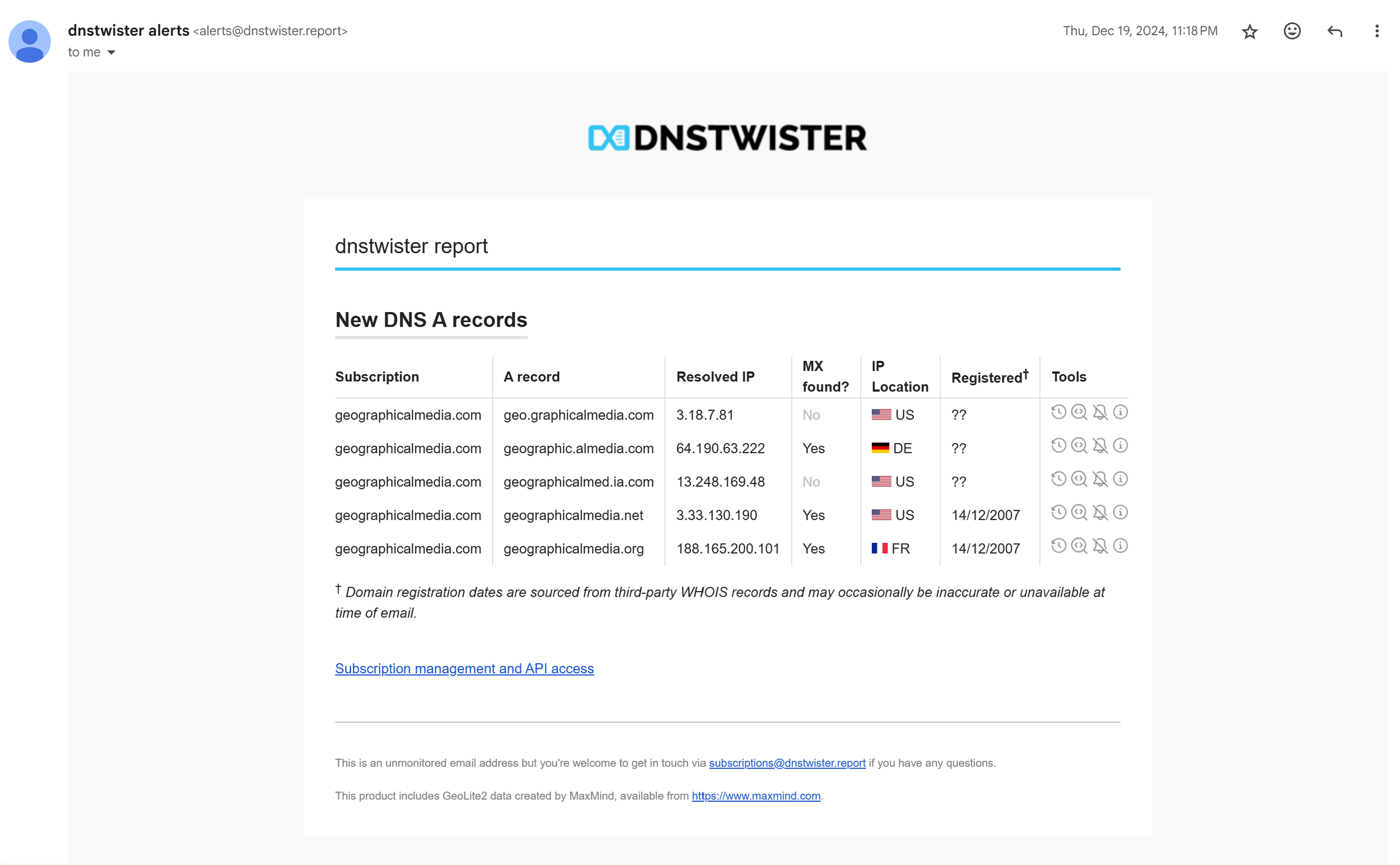Monitor for Brand Impersonation & IP Infringement
Brand impersonation and IP (Intellectual Property) infringement pose significant risks to companies of all sizes. In this guide, we’ll explore how DNSTwister helps you detect suspicious domains, leverage WHOIS data, and utilize third-party takedown services to protect your brand identity.
Understanding Brand Impersonation & IP Infringement
Brand impersonation involves malicious actors registering domains closely resembling your brand or product names, often used for phishing or misleading websites. IP infringement covers unauthorized use of trademarks, patents, or copyrighted material.
Together, these threats can erode customer trust, divert revenue, and enable malware distribution or credential theft. By monitoring look-alike domains proactively, you can safeguard both your brand identity and intellectual property.
The Risks: Reputational Damage, Fraud, & Human Error
Attackers rely on human error—slight domain differences can easily go unnoticed by employees or customers. Potential fallout includes:
Loss of trust if customers fall victim to impersonated domains
Fraudulent billing or unauthorized sales from look-alike sites
Malware distribution and phishing attacks via domain confusion
Legal complications if IP misuse isn’t addressed promptly
Recognizing these risks early and deploying a monitoring strategy is crucial to prevent major breaches and brand damage.
How DNSTwister Identifies Suspicious Domains
DNSTwister continuously scans for newly registered or changed domains resembling yours. These “look-alike” domains might be used for IP infringement, brand impersonation, or phishing campaigns.
1. Automatic Permutation Scanning
DNSTwister’s permutation engine checks hundreds of possible domain variations, looking for newly registered ones that could be used for brand impersonation.
2. Identifying the Source with WHOIS Data
Once a suspicious domain is discovered, DNSTwister provides WHOIS lookup capabilities to reveal domain registrant information (where publicly available). This data may include the registrant’s name, organization, and contact details—crucial for assessing the threat level or pursuing enforcement actions.
While many domain registrations are private or redacted, any available WHOIS data can help you confirm if the domain owner is truly unaffiliated or potentially malicious.
3. Escalating to 3rd-Party Takedown Services
In cases of severe brand impersonation or clear IP infringement, you may need more direct interventions. DNSTwister’s monitoring and WHOIS details can help you decide if a takedown request is warranted. 3rd-party services specialize in:
Filing UDRP (Uniform Domain-Name Dispute-Resolution) complaints
Issuing DMCA takedown notices
Collaborating with hosting providers to remove malicious content
These services typically require documentation of your trademark or brand rights, along with evidence that the offending domain or content is infringing. DNSTwister’s data can serve as part of this evidence package.
Safeguard Your Brand and IP
Brand impersonation and IP infringement can undermine your reputation, disrupt revenue streams, and lead to costly legal battles. By monitoring suspicious domains with DNSTwister, checking available WHOIS data, and—if needed—engaging third-party takedown services, you can maintain a proactive posture against these growing threats.

